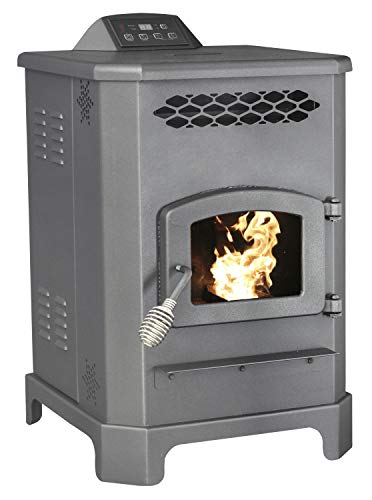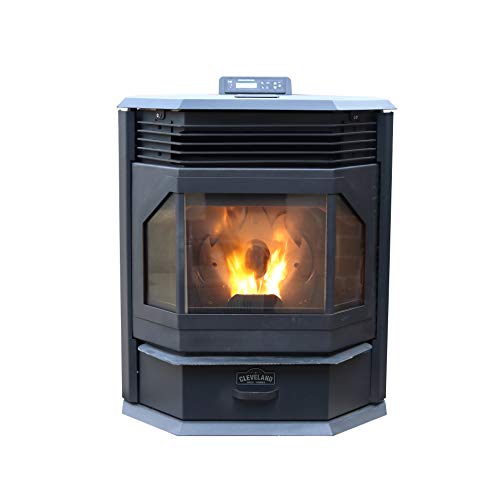Small Pellet Stove 101:"The Ultimate Guide For Beginners
페이지 정보

본문
 Small Pellet Stoves
Small Pellet StovesSmall pellet stoves (visit my webpage) are an excellent alternative to traditional heating systems for homes. These stoves use solid combustible Pellets made from sawdust compressed, other recycled wood products, or biomass sources like corn kernels and nuts.
Pellet stoves don't require a chimney and can be put in nearly any location. They offer impressive energy efficiency and have low emissions.
Energy Efficiency
Pellet stoves are powered by an auger which sends heating pellets to the combustion chamber. They then burn the pellets, generating heat. The process is powered by electric motors, which consume a lot of energy. Once the combustion process has begun the stove's energy consumption is reduced substantially.
Most best rated pellet stoves stoves come with fans which circulate warm air created by the combustion process throughout the home. These fans use electricity to operate, but the amount they consume is generally fairly low compared to other appliances in the home. Consider choosing a pellet stove with low-power fans as well as a digital control panel and a digital display to reduce the power consumption. Also, ensure that you place the stove correctly in your home to ensure proper heat distribution.
Another method of reducing the power consumption of your pellet stove is to regularly clean the exhaust venting system. This will help keep the system running smoothly and stop the accumulation of ash which could limit the flow of air and cause problems with efficiency.
Finally, make sure you purchase top-quality heating fuel pellets that are in line with EPA specifications. A poor quality fuel can affect the efficiency of your stove.
As a second heating source, pellet stoves are more efficient than wood or gas burning fireplaces and heaters. They are also cheaper to operate than the majority of whole-house heating systems, and produce much less dust than traditional wood and pellet stove-burning furnaces.
When evaluating different models, think about the size of the stove's hopper, and the length you'd like it to run before it needs to be filled. A larger hopper can hold more pellets and therefore require less frequent refilling.
Be sure to have a backup plan for power outages, since most pellet stoves require electricity to operate their automated features. The stove will continue to operate in the event of an emergency generator or battery backup. However, the fan and automatic feed mechanisms won't work.
Environmentally Friendly
Pellet stoves are more adaptable than other heating options because they do not require an fireplace. A small pellet stove can be easily installed in any area of the home where a vent pipe will allow smoke to vent out. Installing the stove must be done by a professional to ensure your safety and the proper operation.
Another benefit of pellet stoves is that they do not emit a lot of particulate matter unlike wood burning fireplaces. Wood stoves can produce fine dust particles that could be harmful to some people. This is especially true for infants and those who suffer from respiratory conditions such as asthma. Fine dust particles can cause issues for people with allergies or bronchitis. Moreover carbon monoxide that is created from burning wood can lead to death in extreme instances.
Pellet stoves, on other hand, are famous for their low emissions of carbon dioxide and greenhouse gases. The fuel they use is also made from recycled biomass, such as sawdust or agricultural wastes that are discarded. Yale Environment 360 reported that replacing coal with pellets could cut down on CO2 emissions by 78%.
Pellet stoves are also more convenient to use than traditional wood or coal stoves. You can regulate the temperature of the room using an adjustable thermostat, and you won't have to constantly reload your fireplace with logs or wood pellets. One "batch" of pellets could last for a few hours depending on the stove's model and your house's heating requirements.
Some models, like the Englander Countryside Pellet Stove offer even more convenience by offering a thermostat-compatible hopper. This lets you select the desired temperature and then leave the house without having to refill the hopper again.
Pellet stoves use electricity for their automatic features like the fan and pellet feeder, but this is minimal when compared to other appliances in the home. While they can still function in the event of an outage but it is advisable to be prepared for a cold snap and have backup heating options. If power is out, it is important to ensure that the automatic ignition system and fans are shut off to prevent fire dangers.
Easy to operate
Pellet stoves are based on a simple concept that removes a lot of difficulties and mess that are associated with traditional fireplaces made of wood. Pellet stoves burn small, cylindrical pellets made of compressed sawdust as well as other recycled wood byproducts. These pellets are stored in a hopper or firebox. The pellets are fed into the burner pot using an electric auger to produce flames which produce heat. The smoke from the flames is then pumped through a heat exchanger that ejects the smoke and particulates outside your home, leaving clean indoor air.
Pellet stoves are powered by electricity not gas or fuel oil. This includes the fans and pellet feed mechanisms. This means they are vulnerable to power outages and may require a different heating system until the generator is fixed. They also create noise, both from the pellets and the fans feeding mechanism, though modern designs are designed so that the noise generated is reduced.
The US Stove R5824, a compact and inexpensive pellet stove, is an excellent model of a stove that can be used to heat your home. It features an efficient burner that is 80% efficient and is EPA certified. This means you can expect to save a substantial amount on your heating expenses in the long run, which makes it one of the cheapest pellet stoves available. The R5824 has an easy-to-empty-ash pan as well as a blower, and has automated controls to make operating simple.
The majority of pellet stoves come with self-regulating systems that employ smart control to maintain an even temperature output in line to your desired. Depending on the model you select you may also find features that automatically alert you to the need to add fuel and clean out ash, taking the work out of operating your stove.
Pellet stoves are also a great alternative to a chimney system. They can be set up without a chimney. They can be used in areas that would be otherwise unaccessible to a fireplace with wood burning such as bathrooms and basements.
Economic
Pellet stoves make use of wood-based fuel, which is a great source of renewable power. They produce less carbon dioxide per BTU compared to gasoline or furnace oil. The fuel is made from recycled sawdust and other byproducts of lumber mills which would otherwise go to landfill. For a different option certain people opt for biomass pellets made from agricultural waste materials such as switchgrass or corn instead of wood chips.
A heat exchanger within the stove absorbs the heat generated by the burning of the pellets. The blower circulates heated air through your living area, while the exhaust system ejects combustion gases to the out to the outside. This process is repeated automatically to ensure that the desired temperature is maintained.
If they are properly sized and fuelled with high-quality wood pellets, these stoves could be your primary source of heat. They usually produce enough warmth to warm rooms of up to 1500 square feet. If your home is larger it may require an additional room heater to supplement the stove's output.
Most models come with an electric ignition system and at least a thermostat, making them easier to operate than gas or wood stoves. Certain models come with advanced features like remote control, smartphone connectivity or internet connectivity, as well as a the ability to program settings.
The stoves made of wood don't require chimneys. This simplifies the installation process and reduces costs. The stove is vented through a small exhaust pipe that can be run horizontally through an exterior wall or through the roof. The venting method is also less maintenance intensive than maintaining a traditional fireplace.
The fuel hopper of a smaller pellet stove fireplace insert stove has a large capacity, which allows it to run for a longer time before it needs to be replenished. In low power, the stove can operate for up to 30 hours without the need for a refill.
 Although these stoves are a convenient heating option, they do require some maintenance. You'll need to clean the venting system, heat exchanger and ash trap, as well as load and empty the hopper. Make sure the pellets are dry, as moisture may impact the performance and decrease the life span of the stove.
Although these stoves are a convenient heating option, they do require some maintenance. You'll need to clean the venting system, heat exchanger and ash trap, as well as load and empty the hopper. Make sure the pellets are dry, as moisture may impact the performance and decrease the life span of the stove.- 이전글5 Killer Quora Answers To Indoor Pellet Stove 25.01.06
- 다음글7 Helpful Tips To Make The Most Of Your Electric Fireplace Heater With Mantel 25.01.06
댓글목록
등록된 댓글이 없습니다.



